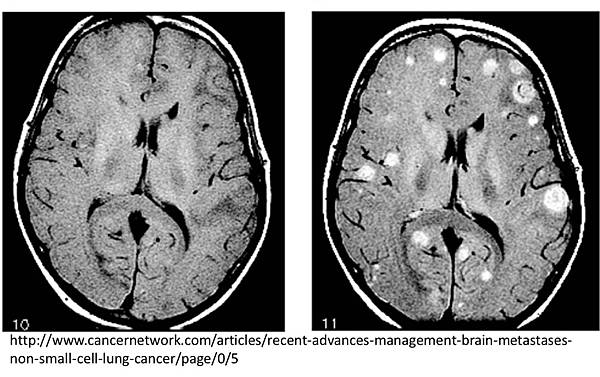
Brain metastases in patients with non-small cell lung cancer: the role of mutated-EGFRs with an exon 19 deletion or L858R point mutation in cancer cell dissemination
Oncotarget, 2017, Vol. 8, (No. 32), pp: 53405-53418
腦轉移(Brain metastases, BM)在非小細胞肺癌相關疾病中,發生率約為20-40%[1]。表皮生長因子受體(EGFR)為最常見的致癌基因(oncogene)之一,並且在許多NSCLC的患者都能觀察到EGFR突變,而在過去EGFR突變與NSCLC腦轉移之間的關係已有被注意到[2,3],然而,這些發現並沒有一致性,因此EGFR突變與否是否能夠用來預測NSCLC病人腦轉移以及其預後存活,至今尚未得到證實。
目前文獻顯示,常見的兩種EGFR突變,各別為EGFR exon 19缺失與exon 21 (L858R)點突變,這兩類的突變對腫瘤產生不同的影響,也會造成腫瘤不同的治療療程跟預後存活[4,5]。
EGFR抑制劑(TKI),如:Gefitinib、Erlotinib及Afatinib,目前被用於靶向治療EGFR突變的NSCLC患者,這代表EGFR突變與否具有不同的分子層次的影響,而在過去文獻也發現,在乳癌與口腔癌中,EGFR蛋白表現量與腫瘤移動/轉移有關係[6,7],然而在肺癌中,EGFR突變對於腫瘤轉移尚未得到證實。
因此本篇實驗主要想探討EGFR突變(EGFR exon 19缺失與L858R點突變)是否能用於預測NSCLC患者腦轉移subsequent BM (SBM)的過程,以及其扮演的角色。
實驗回顧596名NSCLC病例,596名患者中有384人接受EGFR基因檢測,其中有186名患者有EGFR突變,186名中有96名患者最後發展成BM(圖一)。EGFR突變預測SBM在IIIB-IV患者預後存活(37.1% vs. 10.6%, HR=2.98, P=0.002,圖二),其中年輕EGFR突變的組群相對於老年EGFR無突變的族群有較高SBM的風險 (58.1% vs.10.9%, HR=6.57, P<0.001,圖三),此外,EGFR exon 19缺失組儘管總生存時間比EGFR L858R突變組稍微長一些(20.6 vs. 14.2 months, P=0.368),但發生SBM的風險卻略高一點(39.5% vs. 34.5%, HR=0.91, P=0.770,圖四)。
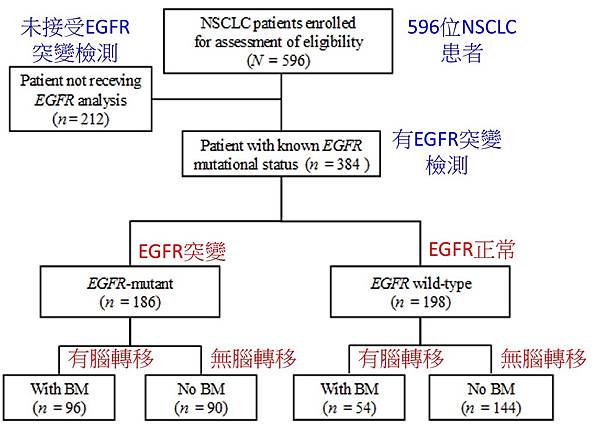
圖一、收集患者並分類
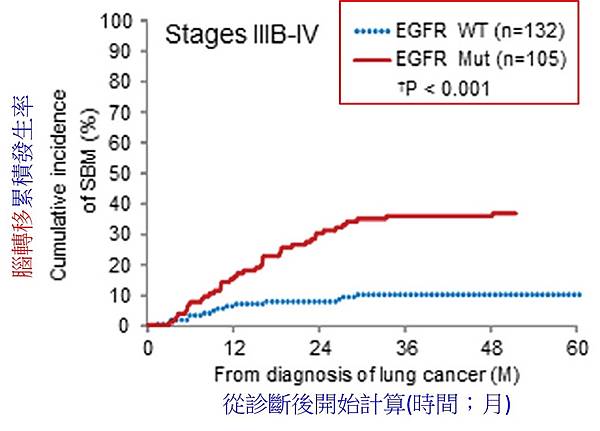
圖二、EGFR突變預測SBM的預後存活
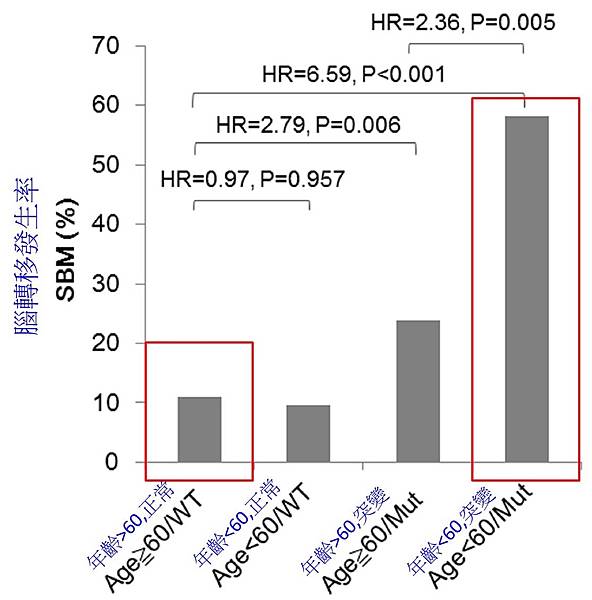
圖三、比較SBM、EGFR突變與年齡間的關係
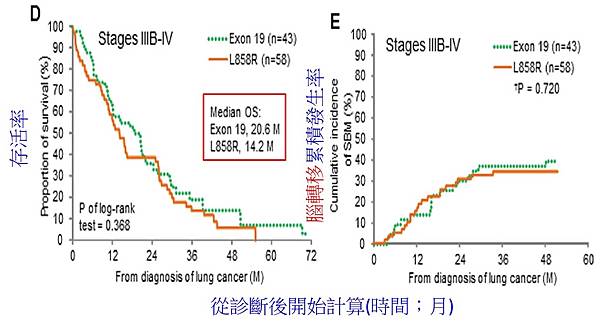
圖四、比較EGFR exon 19缺失與EGFR L858R點突變的預後存活
結語,本篇實驗證實具有EGFR突變的患者有較高SBM的風險,而此風險與患者年齡有關,此外EGFR exon 19缺失與L858R點突變可以用於預測SBM的發生。因此可知,NSCLC患者可以透過偵測EGFR突變情形,來給予預防或是預測SBM,延長患者的存活時間及改善預後。
Edited by A-Kai
參考資料:
1. Mujoomdar A, Austin JH, Malhotra R, Powell CA, Pearson GD, Shiau MC, Raftopoulos H. Clinical predictors of metastatic disease to the brain from non-small cell lung carcinoma: primary tumor size, cell type, and lymph node metastases. Radiology. 2007;242: 882-888.BM (SBM)
2. Shin DY, Na II, Kim CH, Park S, Baek H, Yang SH. EGFR mutation and brain metastasis in pulmonary adenocarcinomas. J Thorac Oncol. 2014;9: 195-199.
3. Li B, Sun SZ, Yang M, Shi JL, Xu W, Wang XF, Song MM, Chen HM. The correlation between EGFR mutation status and the risk of brain metastasis in patients with lung adenocarcinoma. J Neurooncol. 2015;124: 79-85.
4. Riely GJ, Pao W, Pham D, Li AR, Rizvi N, Venkatraman ES, Zakowski MF, Kris MG, Ladanyi M, Miller VA. Clinical course of patients with non-small cell lung cancer and epidermal growth factor receptor exon 19 and exon 21 mutations treated with gefitinib or erlotinib. Clin Cancer Res. 2006;12: 839-844.
5. Karachaliou N, Mayo-de las Casas C, Queralt C, de Aguirre I, Melloni B, Cardenal F, Garcia-Gomez R, Massuti B, Sánchez JM, Porta R, Ponce-Aix S, Moran T, Carcereny E, et al. Association of EGFR L858R mutation in circulating free DNA with survival in the EURTAC trial. JAMA Oncol. 2015;1: 149-157.
6. Verbeek BS, Adriaansen-Slot SS, Vroom TM, Beckers T, Rijksen G. Overexpression of EGFR and c-erbB2 causes enhanced cell migration in human breast cancer cells and NIH3T3 fibroblasts. FEBS Lett. 1998;425: 145-150.
7. Thomas SM, Coppelli FM, Wells A, Gooding WE, Song J, Kassis J, Drenning SD, Grandis JR. Epidermal growth factor receptor-stimulated activation of phospholipase Cgamma-1 promotes invasion of head and neck squamous cell carcinoma. Cancer Res. 2003;63: 5629-5635.


 留言列表
留言列表

